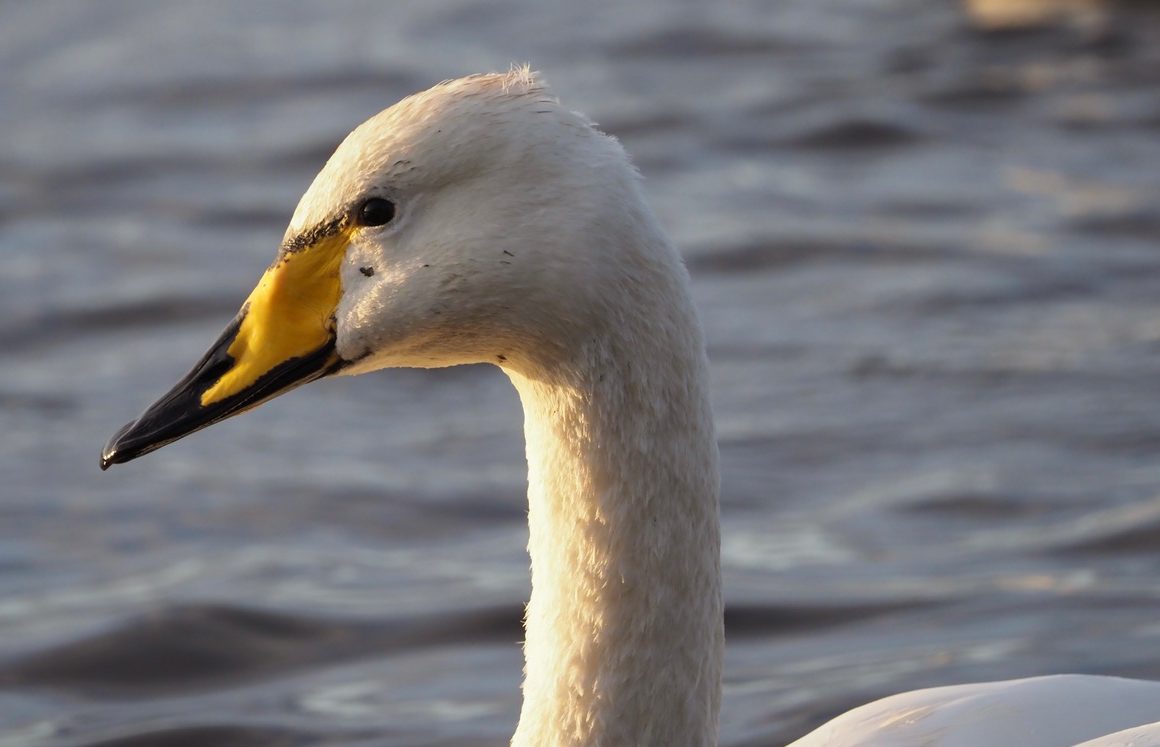
Ten days without a glimpse of the sun is a depressing experience, but that’s what we experienced here in England for the first 10 days of November. They were really 10 days without any weather at all, as we had neither rain nor wind, due to an almost stationary band of high pressure over the country. In the summer high pressure means sunshine, but in autumn it usually results in grey skies and morning mists. It’s not great weather for birding, either.
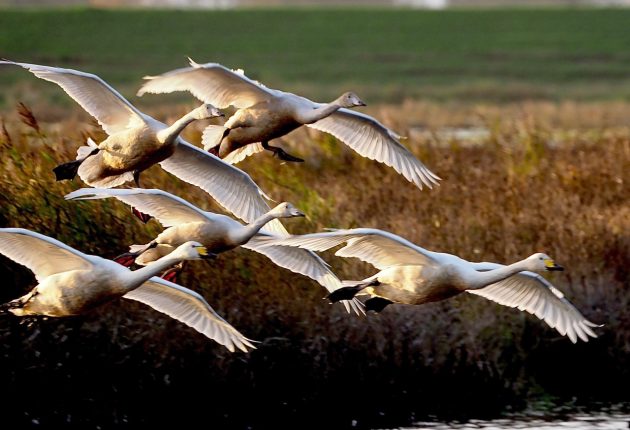
Whooper Swans at sunset
The gloom lifted, at long last, on the 11th, so I celebrated on the 12th by venturing out for a day’s birding with my pal Andrew. We opted to visit the Wildfowl and Wetlands Trust’s (WWT) reserve at Welney, without a doubt the best site in eastern England for seeing big flocks of wildfowl. Welney is part of the Ouse Washes, a cunning draining system devised by the Dutch engineer Cornelius Vermuyden way back in the 17th century.
Vermuyden managed to drain the Fens, once a huge area of tidal and freshwater marshland. It must then have been a fantastic area for birds, but today the Washes still attract thousands of ducks, geese and swans throughout the winter. The Washes are 20 miles long and half a mile wide, covering nearly 6,000 acres. More than half the area is owned by conservation bodies, with WWT controlling the largest and most productive area for birds. The WWT reserve has several hides, including a very spacious, glass-fronted building which enjoys the rare luxury of central heating, making it a great place to watch birds on a chilly winter’s day.
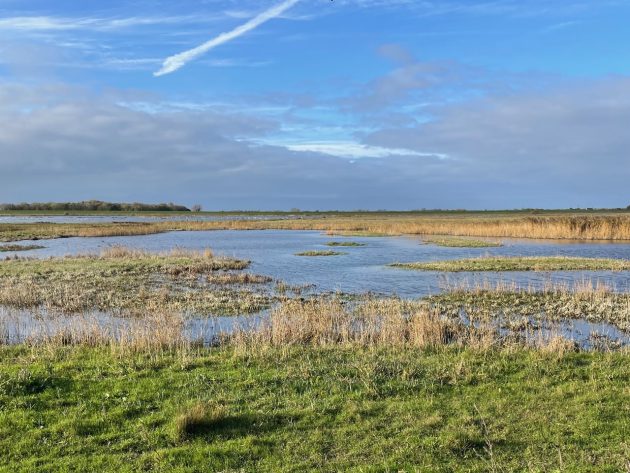
It wasn’t really very chilly on the day of our visit, though there was sufficient wind to remind us it was November, despite the warm sunshine. Wild swans are the main attraction: in 2021, no fewer than 12,500 Whoopers wintered here. Bewick’s Swans used to occur in big numbers, too (with peak counts in the past of over 6,000 birds), but today the UK wintering population has declined by 96%, so numbers struggle to reach 1,000. This is due to short-stopping, with milder winters allowing the birds to remain on the near-continent.
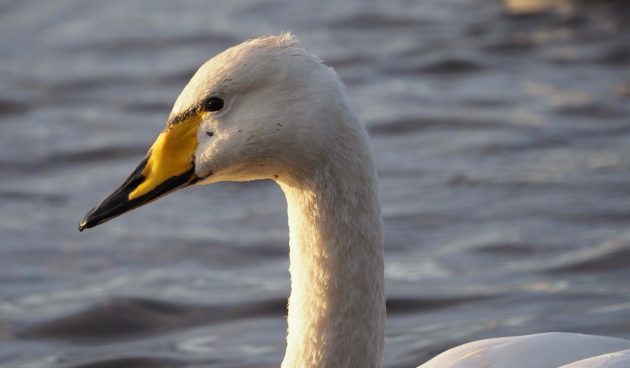
The wedge of yellow on the beak identifies the Whooper (above and below)
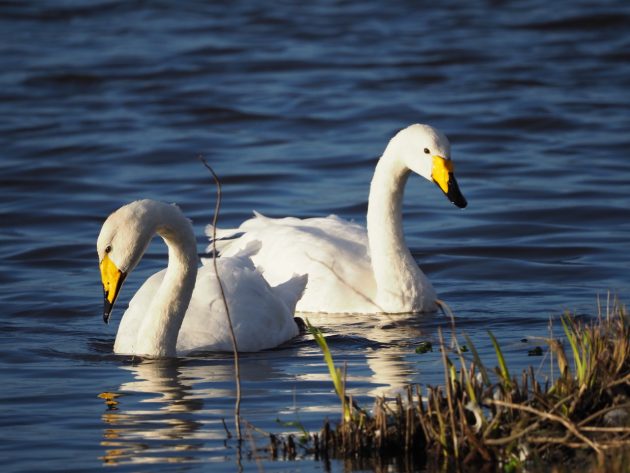
No Bewick’s Swans had been reported so far this season, so our chances of seeing any weren’t good, but there was no problem in seeing their larger cousins. The Whoopers that winter at Welney come from Iceland. They return to Welney in October, and there were already several thousand in the area. Most, however, were feeding on the arable fields surrounding the Washes, with only a few hundred on the WWT reserve. Food is plentiful early in the season, so the afternoon swan feeds provided by the WWT are not currently attracting many swans. Fewer than 20 birds were drawn in on the day of our visit, but in a month or two there are likely to be scores, if not hundreds, of hungry birds jostling for position at feeding time.
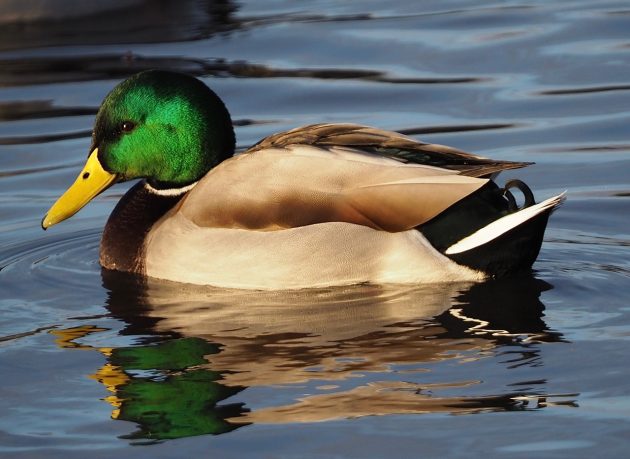
Even the humble Mallard looks good in the sun
However, if there weren’t many Whoopers to be seen, there were plenty of other birds. Estimating the numbers of Wigeon and Teal was difficult, but both were present in their thousands. With them were smaller numbers of Shoveler, Gadwall and Mallard, with just a few Pintail. Numbers of the latter will rise considerably during the winter. Because the Washes are shallow, dabbling ducks dominate, but flocks of Pochard (below) always gather in front of the main hide.
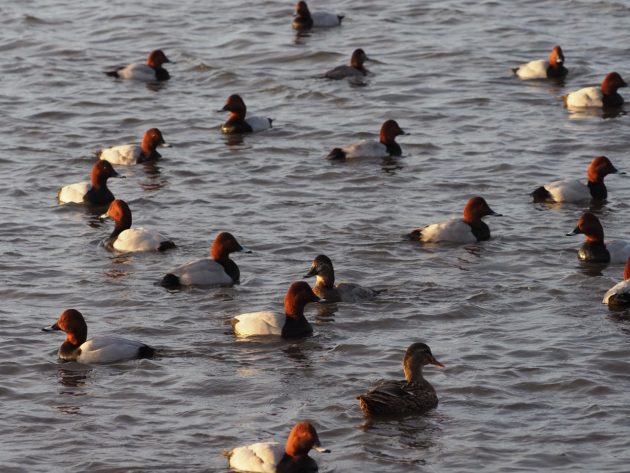
The Pochard flock is male-dominated. Female pochard (like my wife) don’t like the cold, so they tend to winter farther south than the more hardy drakes, so for every 10 drakes you see, there’s usually no more than one female.
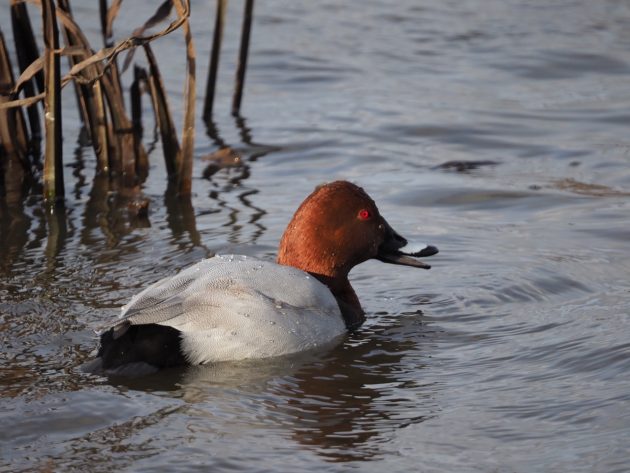
Drake Pochard typically outnumber the females (below) by a ratio of 10:1
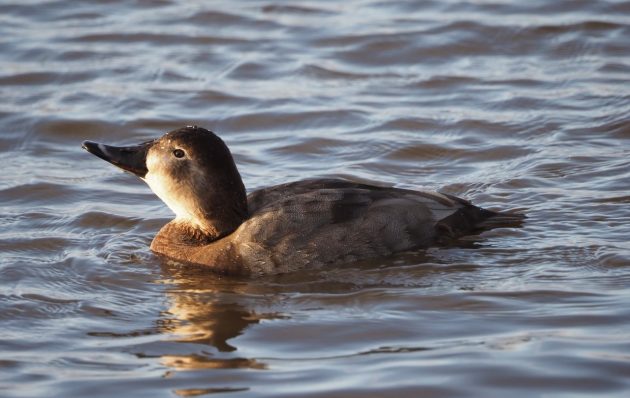
Like the Bewick’s Swans, numbers of Goldeneye wintering in eastern England have fallen markedly in recent years, as they are also short-stopping. Thus I was delighted to see half a dozen of these diving ducks among the pochard. All were females, and they never stopped diving, so counting them was difficult as they spent most of their time under water.
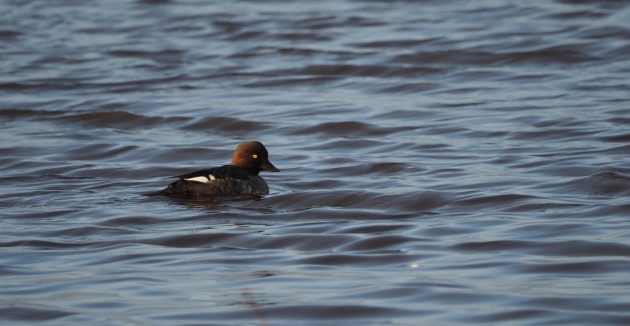
A female Goldeneye
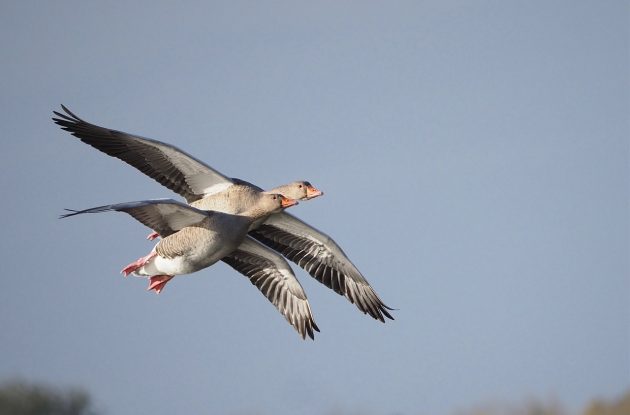
A passing pair of Greylags
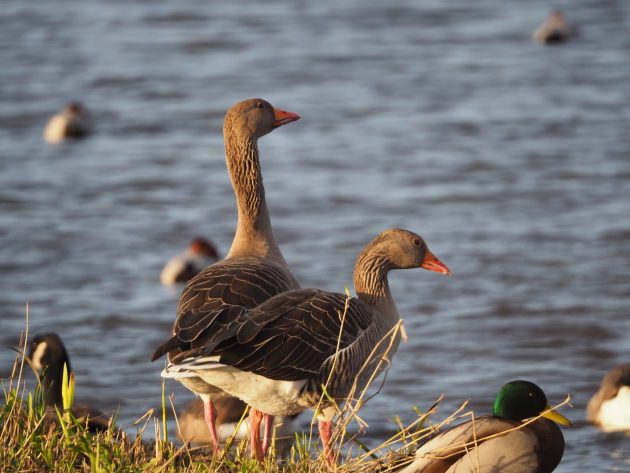
The same pair of Greylags on the ground
Though no Bewick’s had been reported, there had to be a good possibility that the odd pair had arrived. So it proved. A sharp-eyed fellow birder, working hard with his scope, announced that he had found a pair. They weren’t easy to see, but inspection through Andrew’s scope revealed their distinctive beak pattern, with noticeably less yellow than that of the Whooper. Incidentally, the Collins Bird Guide calls these Tundra Swans, a reminder that they are first cousins of the North American swans of the same name. Bewick’s Swan takes its name from Thomas Bewick (1753-1828), a celebrated ornithologist and wood engraver. It’s known in France as Cygnet de Bewick, while the Dutch (rather unimaginatively), call it the Kleine Zwaan (Small Swan).
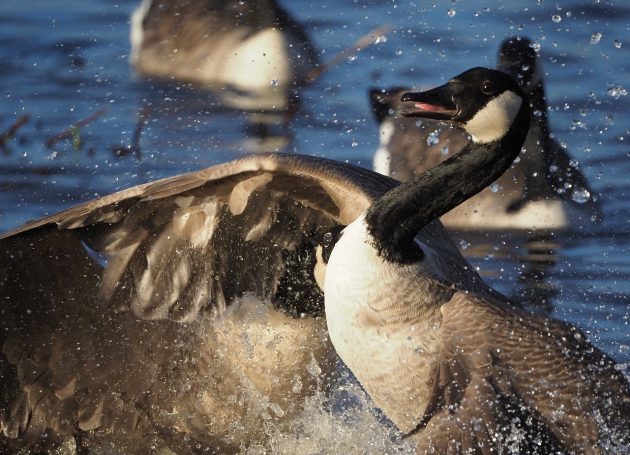
A Canada Goose punch-up
One of the great pleasures of visiting Welney is simply watching birds. The vista from each of the the hides is panoramic, and there’s never a moment when there’s nothing happening. It might be a patrolling Marsh Harrier, flushing a few hundred Teal and Lapwings into flight, or perhaps a Great White Egret flapping with lazy wingbeats low over the washes in search of fresh fishing. The Canada Geese might be indulging in a noisy squabble, while squadrons of Wigeon take to the air, the drakes making their lovely wheoo whistling calls. Black-tailed Godwits in flocks hundred strong give a display of synchronised flying, while wisps of snipe drop into the marsh, instantly disappearing from view.
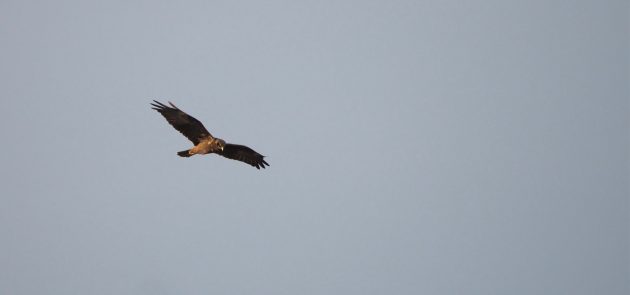
A patrolling Marsh Harrier
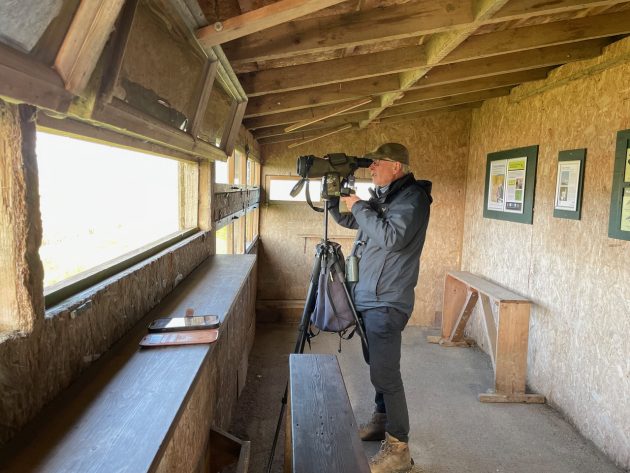
Plenty of room in the hide
Best off all, though, are the swans. Family parties come and go all day, while sometimes much larger flocks flight in after feeding in the surrounding fens. They are not just a pleasure to the eye, but their atmospheric and far-carrying bugling calls delight the ear. Winter on the Washes is always a treat, especially when the sun shines.
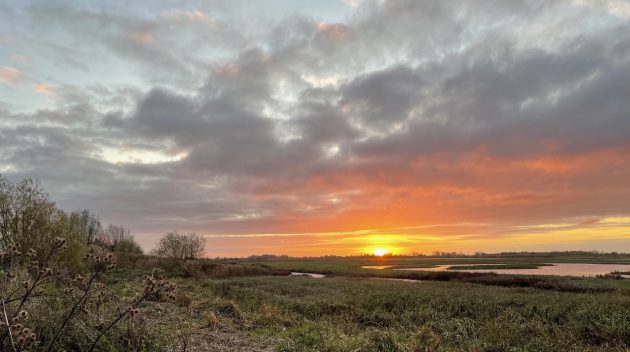
The end of a November day: sunset over the washes













That mallard is beautifully photographed but the swans are the stars, even the Kleine Zwaan…